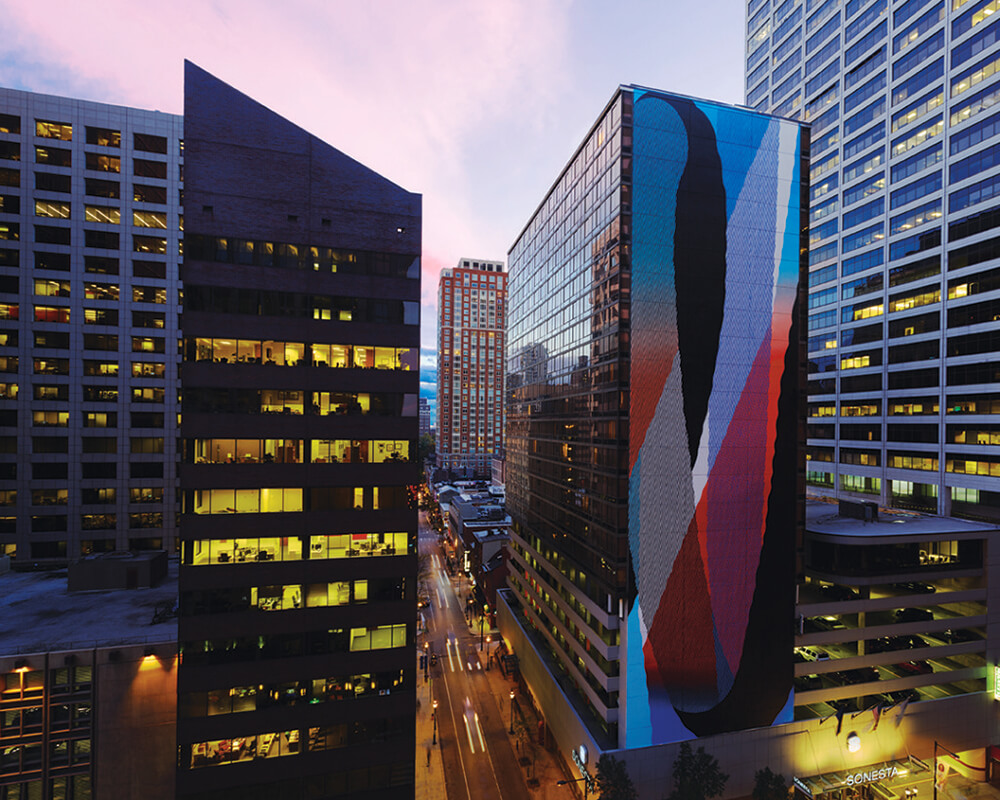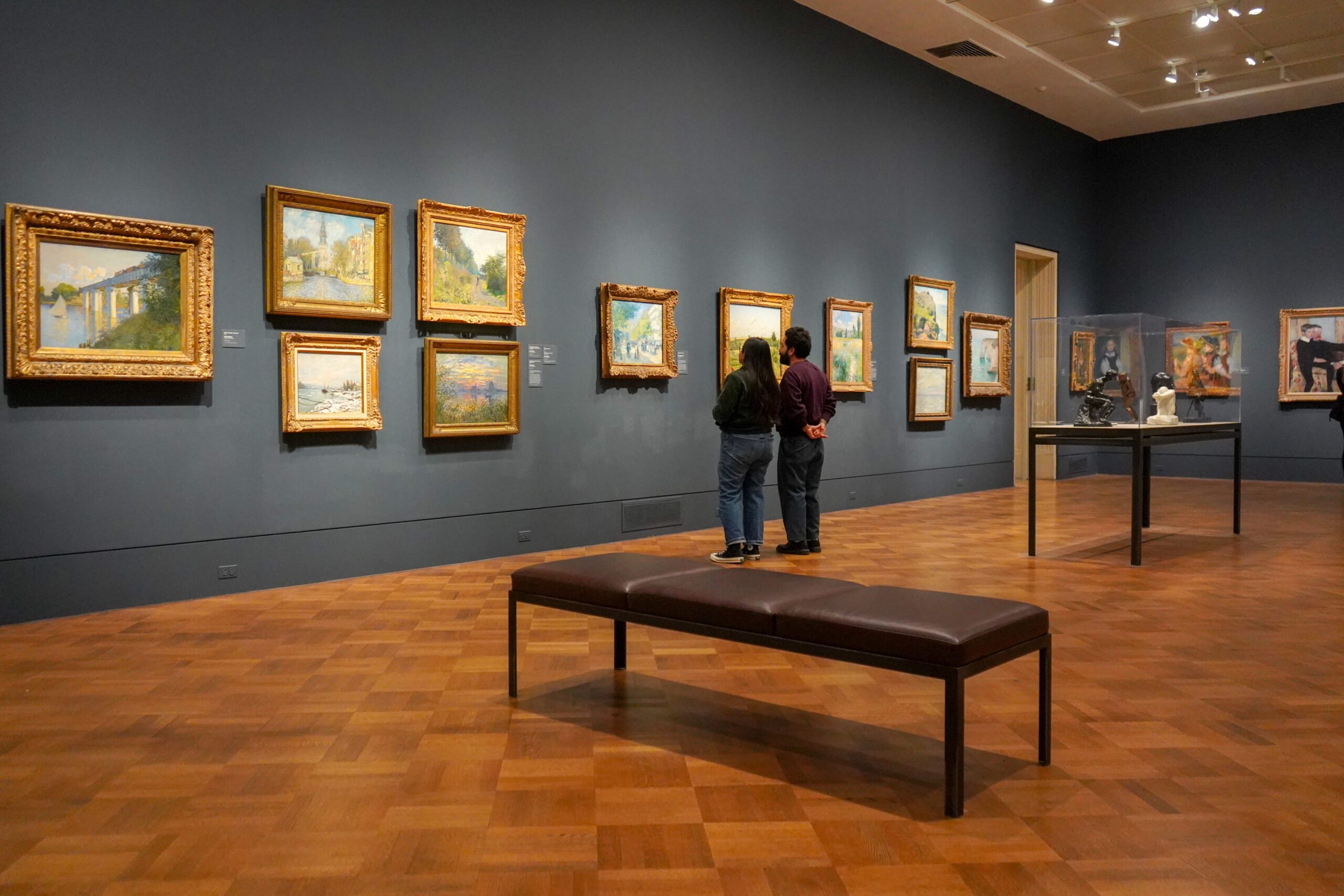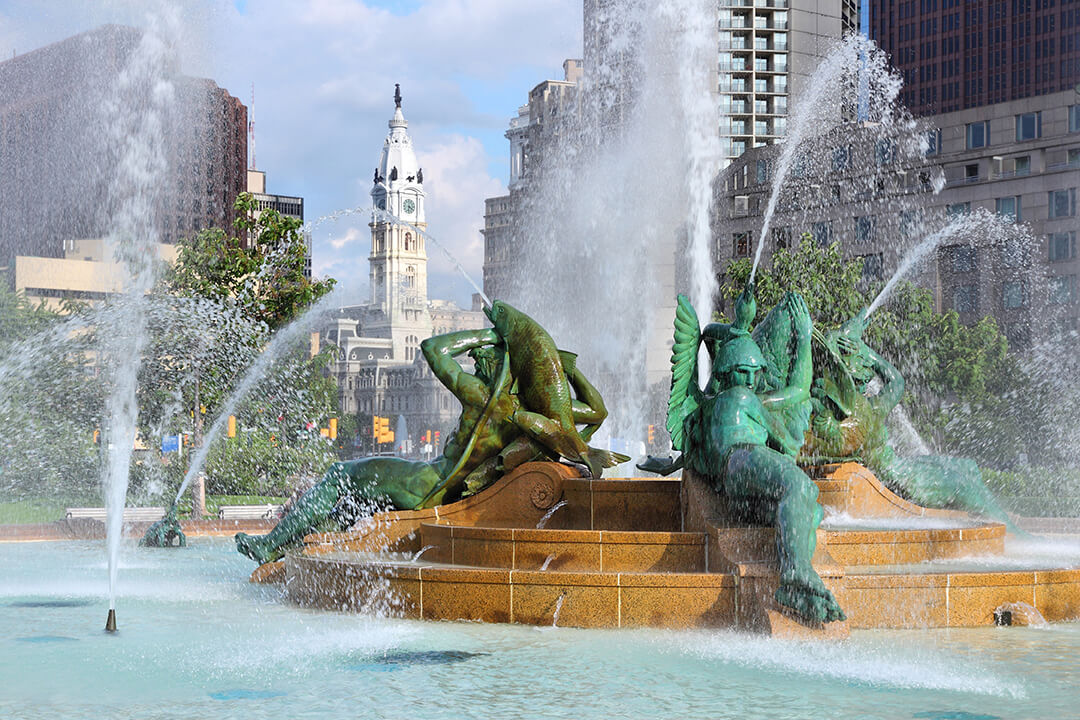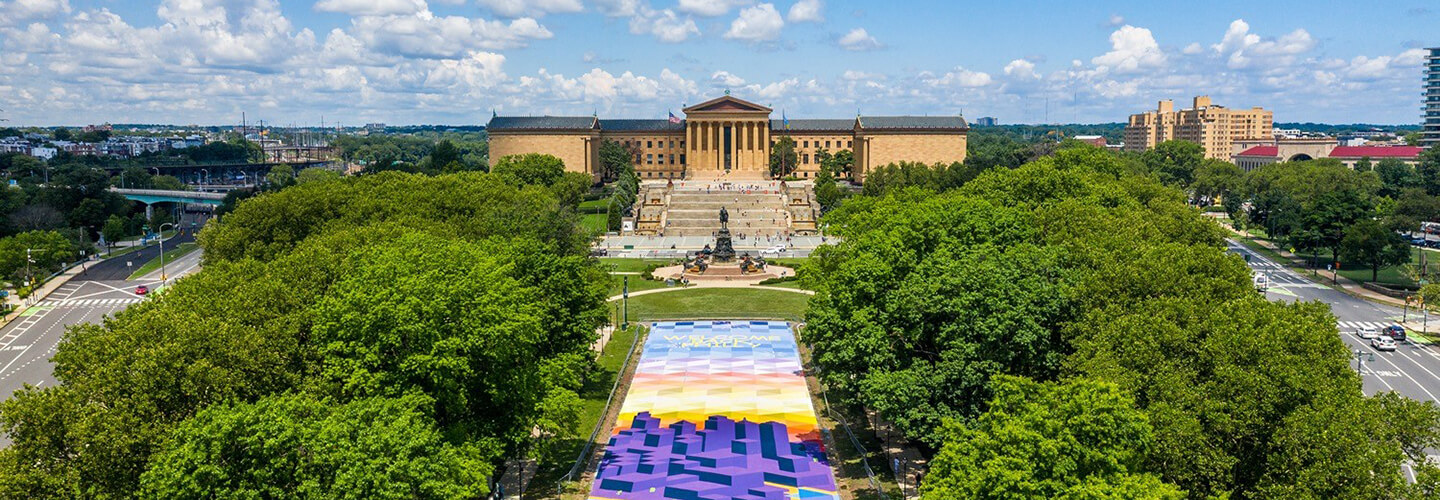
Modeled after the Champs-Élysées in Paris, the Benjamin Franklin Parkway is Philadelphia’s artistic red carpet.
Many of the city’s prestigious museums—such as the Philadelphia Museum of Art, Barnes Foundation, and The Franklin Institute —are conveniently located along the Parkway, allowing visitors to see the best of the city’s arts and culture in a single day. In addition to world-class museums, visitors can find some of the city’s most famous sights, including Robert Indiana’s LOVE statue and the Swann Memorial Fountain.
Below is a list of Philadelphia museums and attractions on the Benjamin Franklin Parkway, beginning at Love Park and leading toward the renowned Philadelphia Museum of Art. Starting in Center City, you can walk up the Parkway and explore these esteemed sites and attractions.
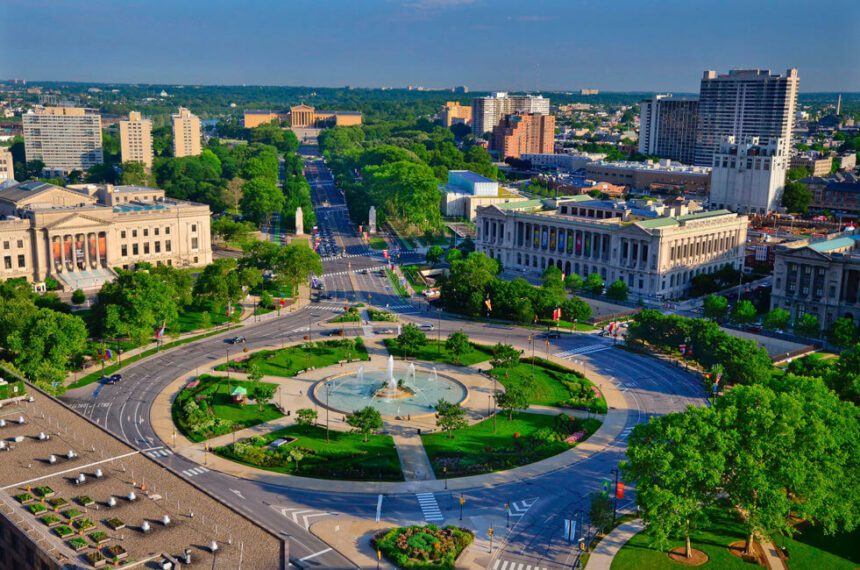
Philadelphia’s Benjamin Franklin Parkway with Logan Circle in the center. Photo by B. Krist.
Cathedral Basilica of Saints Peter and Paul
Address: 1723 Race St
Located at 18th Street and the Benjamin Franklin Parkway, the Cathedral Basilica of Saints Peter and Paul is the largest Catholic church in Pennsylvania. The cathedral is modeled after the Lombard Church of St. Charles in Rome and hosts masses every Sunday, including one in Spanish. It has been the site of two papal Masses: one by Pope John Paul II in 1979 and the other by Pope Francis in 2015.
In 2015, Robert Indiana’s AMOR sculpture was brought to Philadelphia to honor Pope Francis’ World Meeting of Families visit. The statue is an alternate take on the artist’s iconic LOVE sculpture featuring the word “Amor.” The famed piece is located across the street from the cathedral.
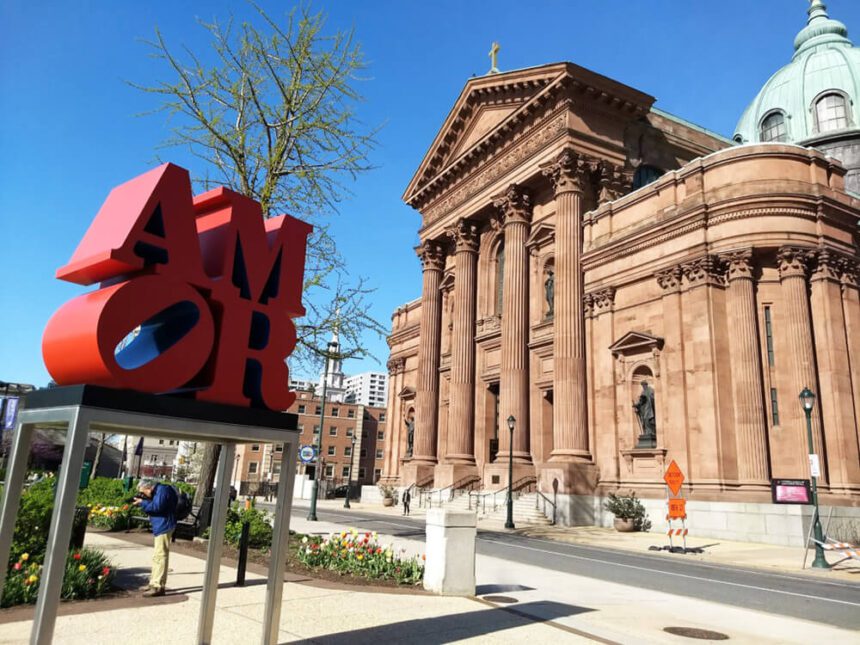
Cathedral Basilica of Saints Peter and Paul and AMOR sculpture. Photo by R. Bloom for PHLCVB.
The Academy of Natural Sciences of Drexel University
Address: 1900 Benjamin Franklin Pkwy
At The Academy of Natural Sciences, the oldest natural history museum in the Americas, experts study critical global issues in biodiversity, evolution, and environmental science. The academy’s public exhibitions educate visitors about the natural world and the efforts invested in its preservation. The museum’s children’s exhibitions enable small explorers to dig for dinosaur fossils and learn about animals.
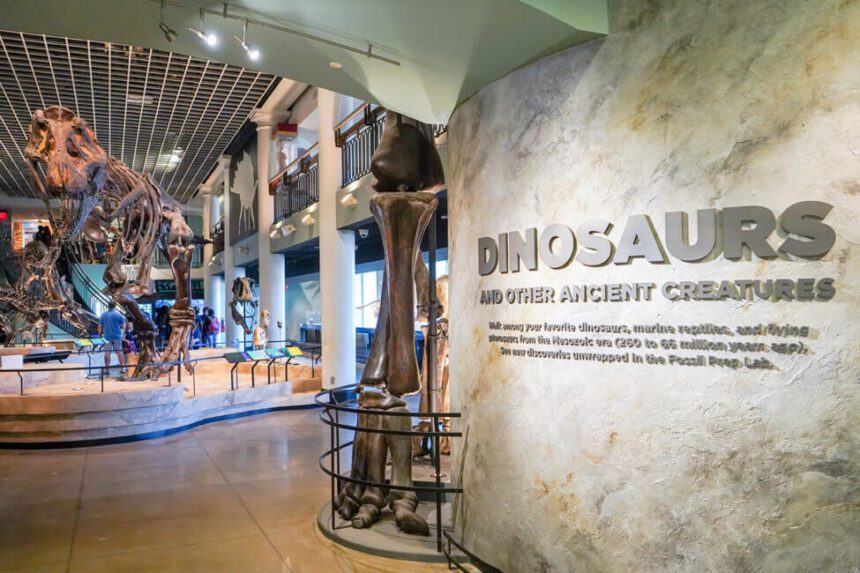
Academy of Natural Sciences. Photo by K. Huff for PHLCVB.
Moore College of Art and Design
Address: 1916 Race St
Sarah Worthington Peter founded the Moore College of Art and Design in 1848 as the nation’s first and only women’s visual arts college. It was established to prepare women to work in the new industries created during the Industrial Revolution. Today, the institution’s The Galleries at Moore showcases alumni and curated exhibitions. The Galleries support Moore College of Art & Design’s educational mission and are open to the public, free of charge.
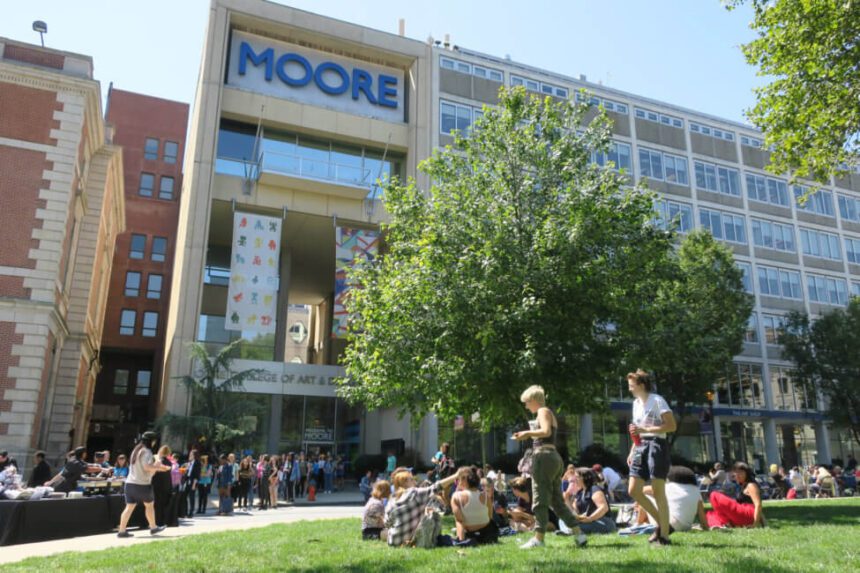
Moore College of Art and Design. Photo by M. Armstrong.
Free Library of Philadelphia
Address: 1901 Vine St
The Free Library of Philadelphia’s Parkway Central Library is a stunning Beaux-Arts-style building that immediately catches the eye. Julian Abele, a prominent African American architect from Philadelphia, designed the library, which opened in 1927. Inside, guests can awe at its rare book department featuring books, manuscripts, and works of art from 3,000 BCE. The Library also holds one of the world’s most renowned Charles Dickens collections.
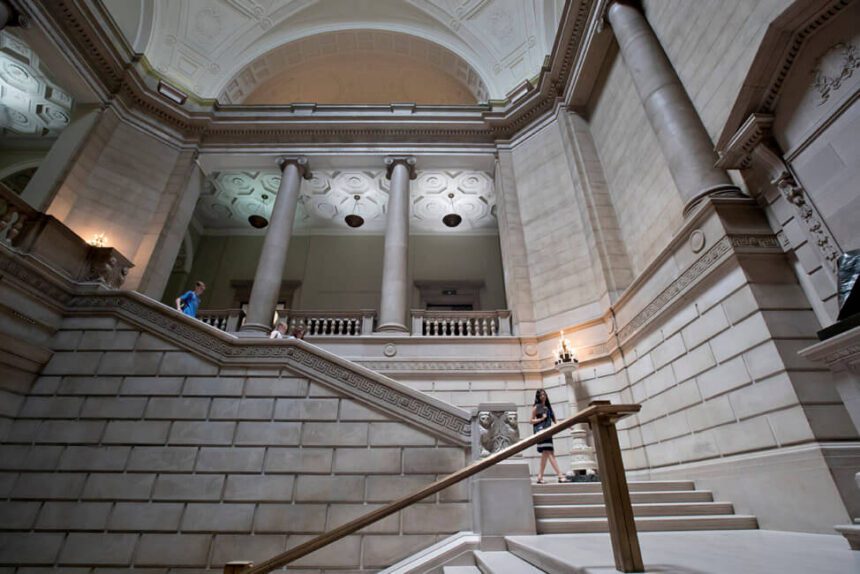
Free Library of Philadelphia. Photo by R. Brandenberg.
The Franklin Institute
Address: 222 N 20th St
As a place where science comes alive, The Franklin Institute is where curious families can explore together. Influenced by famous Philadelphia scientist and Founding Father Benjamin Franklin, the institute aims to inspire a passion for learning about science and technology. Inside, guests can marvel at the stars in the Fels Planetarium and roam inside the Giant Heart.
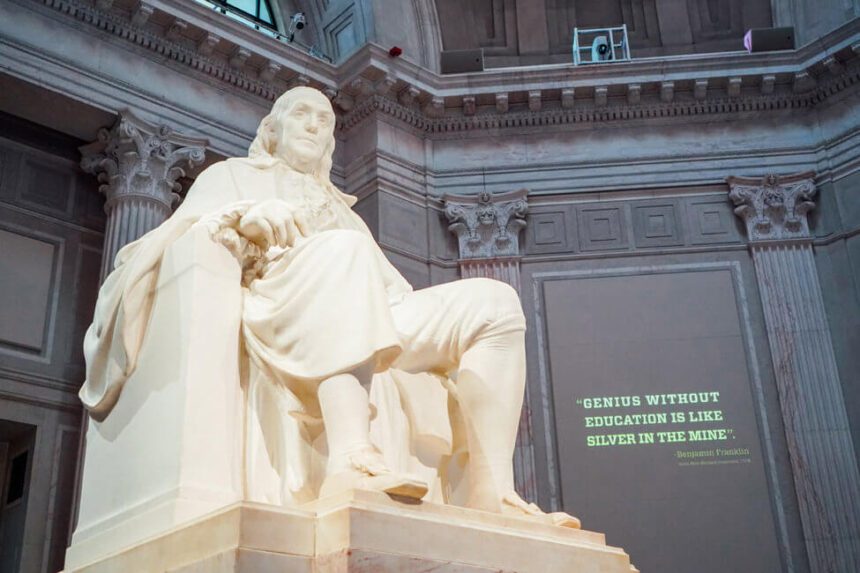
Benjamin Franklin Memorial at The Franklin Institute. Photo by K. Huff for PHLCVB.
The Barnes Foundation
Address: 2025 Benjamin Franklin Pkwy
Dr. Albert Barnes’ astounding private art collection is accessible from the Benjamin Franklin Parkway. The Barnes Foundation is home to one of the world’s great collections of modern European paintings, including works by Renoir, Cézanne, and Matisse. Collected between 1912 and 1951, the art is arranged in unique ensembles that emphasize visual relationships—there are no labels like you would see in a typical museum.
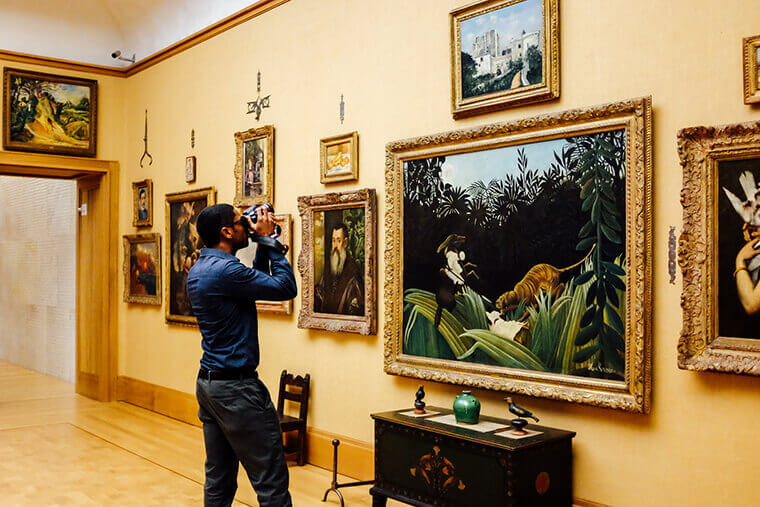
Barnes Foundation. Photo by K. Huff for PHLCVB.
The Rodin Museum
Address: 2151 Benjamin Franklin Pkwy
Dedicated to the art of French sculptor Auguste Rodin, The Rodin Museum houses one of the largest collections of his sculptures outside of Paris. In front of the museum sits “The Thinker,” welcoming guests as they stroll through lavish gardens. Once inside, visitors can examine the intricacies and details of Rodin’s masterpieces.
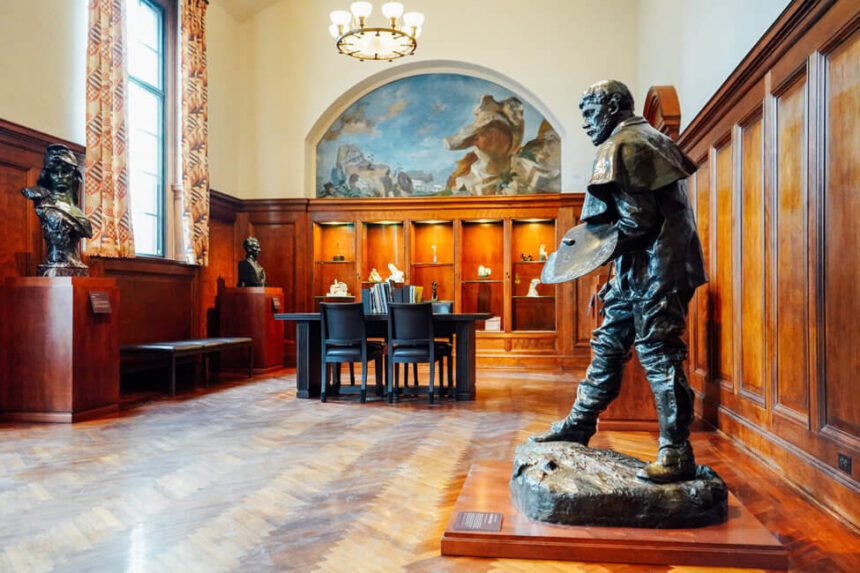
Rodin Museum. Photo by K. Huff for PHLCVB.
The Philadelphia Museum of Art
The striking, neoclassical structure at the top of the Parkway holds more than 2,000 years of paintings, sculpture, decorative arts, and architecture. From ancient artifacts that whisper tales of civilizations long past to the vibrant strokes of modern masterminds, the museum’s diverse collection caters to different interests. Highlights include the world’s largest and most important collection of works by Marcel Duchamp and an extraordinary collection of sculptures by Constantin Brancusi.
The Philadelphia Art Museum is also cinematically famous as the site where Rocky Balboa triumphantly ran up the museum’s steps in “Rocky”. At the foot of the steps sits a statue of Rocky for visitors to snap a photo with. This sculpture was created as a prop for a scene in “Rocky III”. However, actor Sylvester Stallone gave it to Philadelphia as a symbol of inspiration.
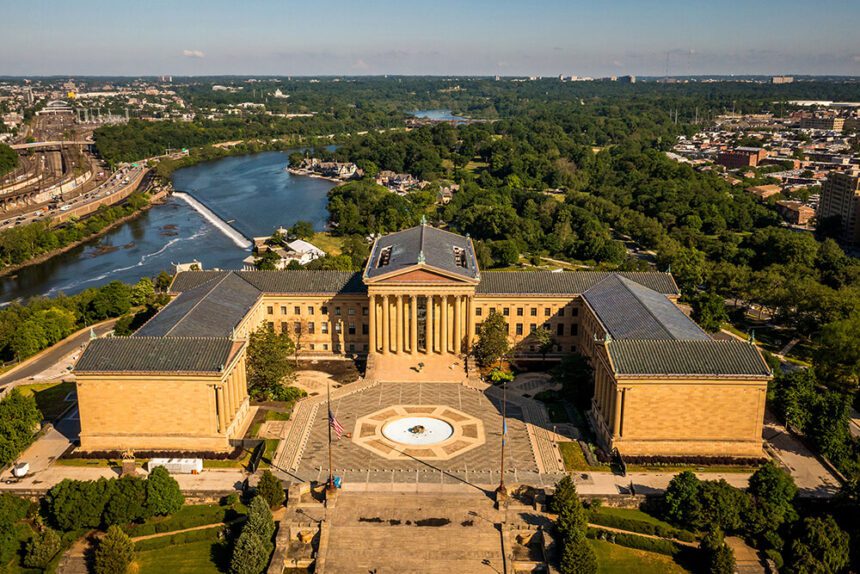
Philadelphia Museum of Art. Photo by JPG Photo & Video.
If you’re walking the Parkway Museums District, don’t forget to grab a bite. Check out our Fairmount neighborhood guide to find essential places to fuel your museum journey.
